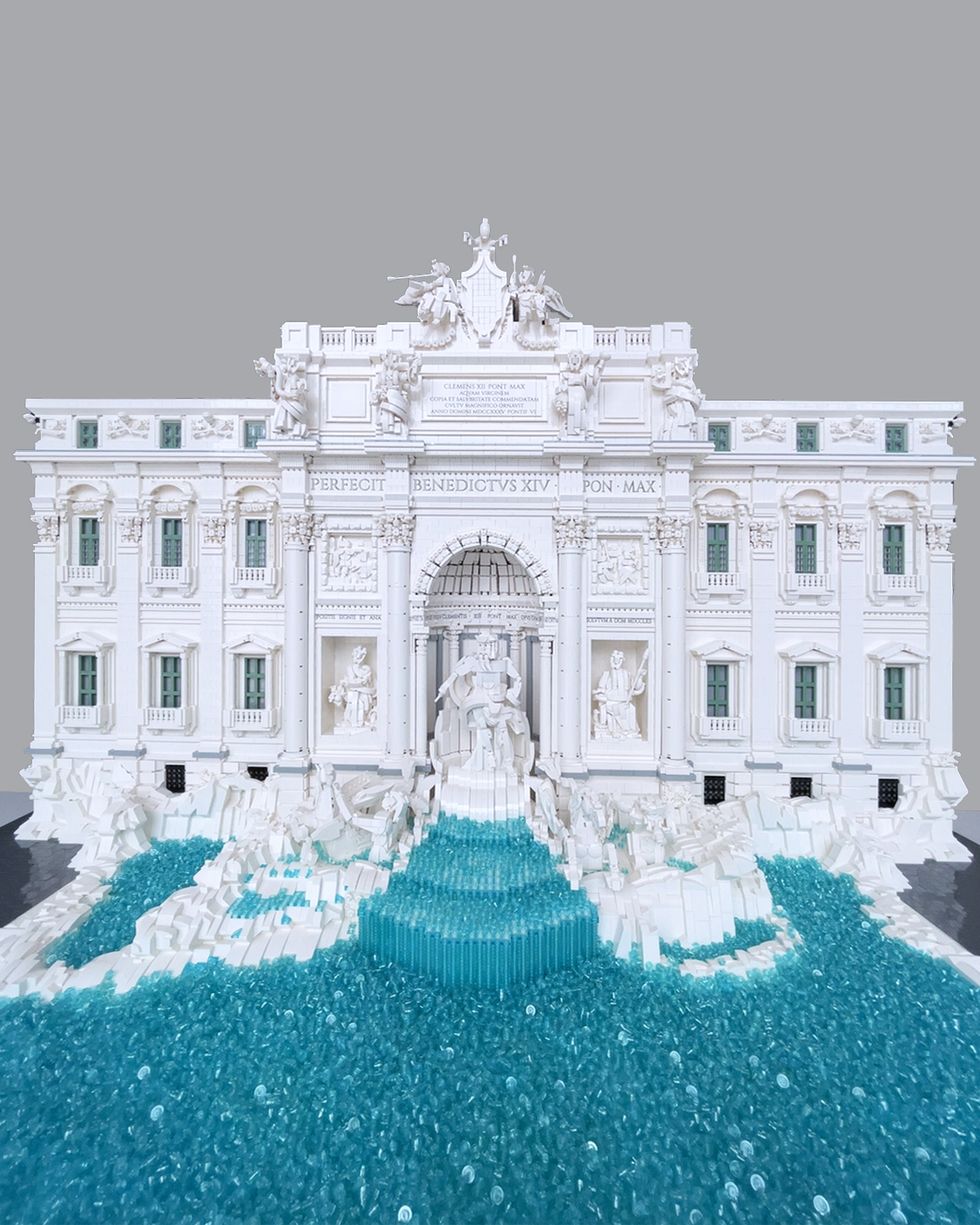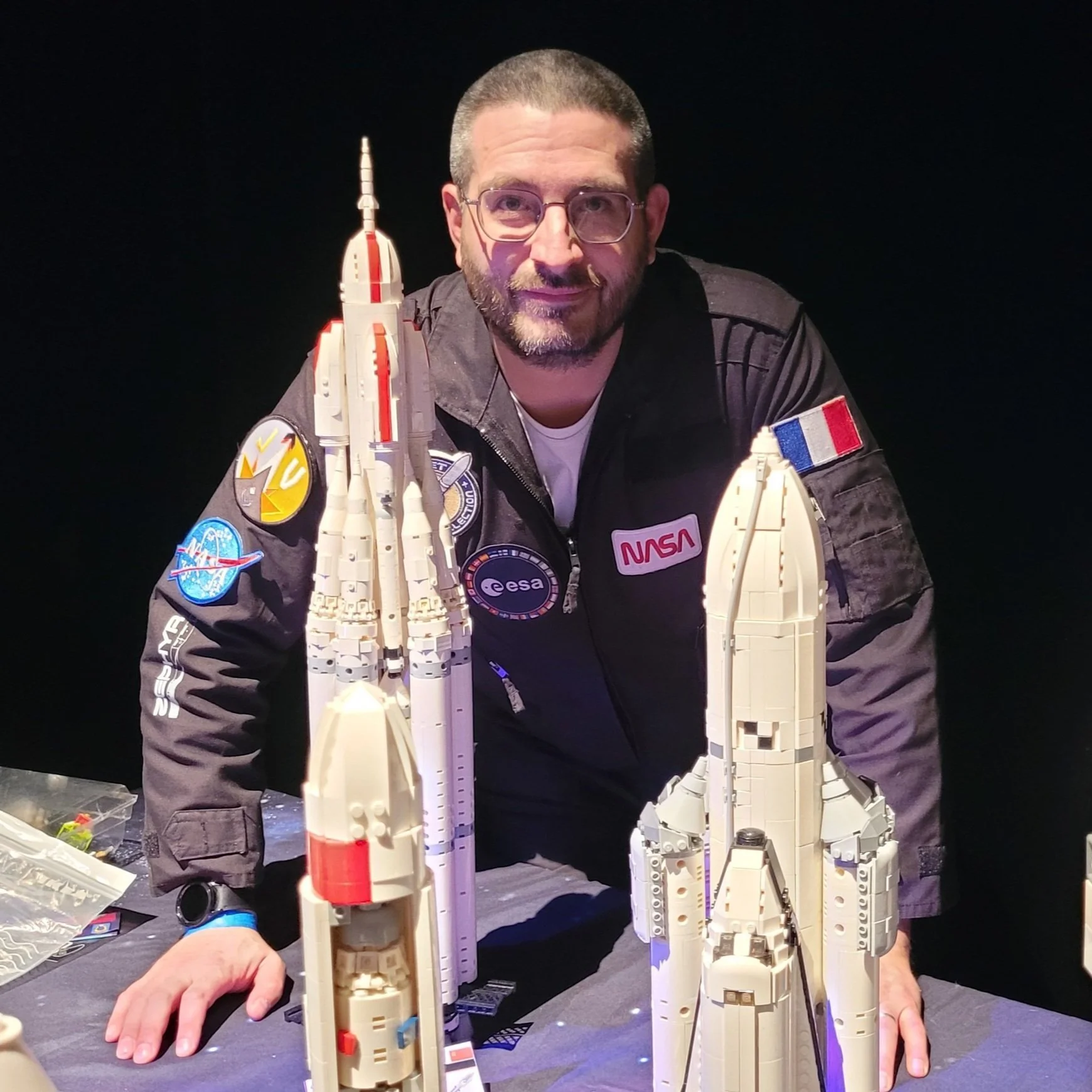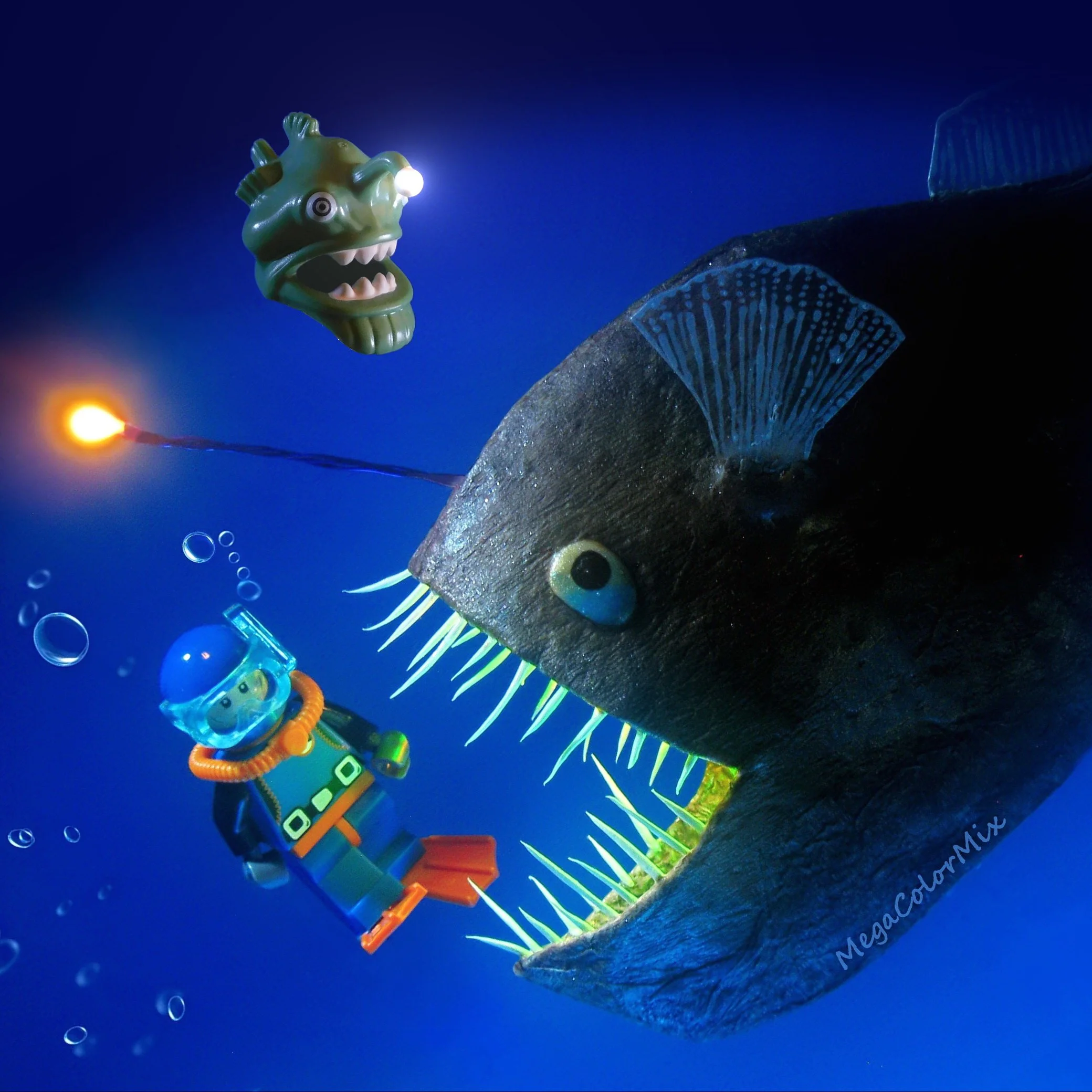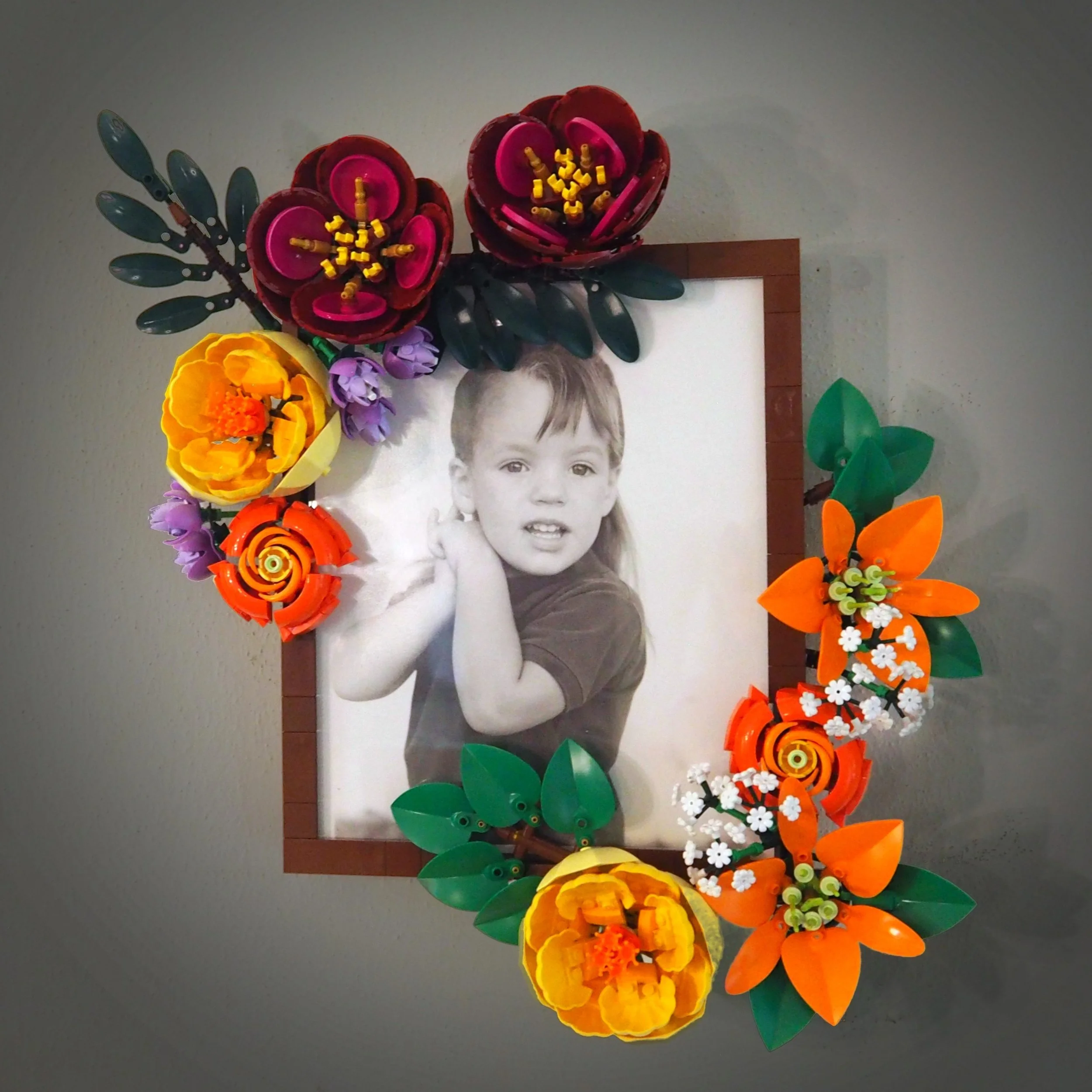I Found Rome a City of Bricks: The UCS LEGO Trevi Fountain
/Best of BrickNerd: Weekend Highlight — Article originally published October 12, 2021.
The LEGO Trevi Fountain set 21020 was one of the first I bought “myself”. Well, technically, I bought it for my son. (I wouldn’t buy a set specifically for me for perhaps another year.)
My son had expressed an interest in the Architecture line, and this particular set caught my eye because I had fond memories of a visit to this destination in Rome. Also, it was the exact price (on top of whatever else I was buying at the time—probably Mixels) to get me to a free Bricktober gift with purchase at Toys R Us… back when Americans still had Toys R Us. In those days, I didn’t spend much money on LEGO. $50 was a huge deal. But that Bricktober freebie was calling my name!
Unfortunately, the Trevi Fountain set is hundreds of white bricks, and while my son had had success with many larger kinds of sets, he was, indeed, only four years old. It was clear when I brought home Trevi Fountain that we had bit off more than he could chew. Waste not, want not; that left me the chance to build something! It was, quite honestly, a challenge with those fiddly horses. (That was then, this is now.) It remains a favorite set, which I still have on display.
With this personal connection to the subject matter, it came as no surprise to find my jaw on the floor when Italian builder Luca Petraglia dropped his latest project on Instagram—a model of the Trevi Fountain comprised of 50,000 bricks.
This behemoth is a beautiful blend of order and chaos, with its clean architectural lines, ornate sculptural detailing, and flowing water features. The build is actually a collaboration with Finnish builder Eero Okkonen. But how could two builders create such a beauty with a continent between them? I reached out to Luca to learn more.
Gwyneth: Thank you for sharing your work with us, Luca! Please tell us a little about yourself. You seem to specialize in architectural models. Are you an architect by trade?
Luca: I started to build with LEGO when I was five years old and I never stopped playing with it. The passion for LEGO architecture is 100% natural, genuine, and totally spontaneous. I am not an architect and I never studied architecture or engineering, It is is merely the result of a lot of practice—about 10 years of playing and 15 of serious building. I was an insurance agent and now LEGO art is my job.
Gwyneth: That career change surely sounds like “living the dream” to most AFOLs! I notice that this is a commission. How did this project start? What were the parameters? How did you settle on this scale?
Luca: The entity who commissioned this project remains a secret for now. Like all of my projects, though, it started with an accurate analysis of the Fountain. I decided on the proportion, and I did some pencil sketches to understand the dimension. The scale is 1/30, more or less. I chose this scale to optimize the grandeur of the statues and of the entire fountain.
Gwyneth: How large is this MOC? How long did it take to realize it?
Luca: The MOC is 150 cm (59 inches) long. Digitally designing the project took about one month and the construction took about two weeks.
Gwyneth: I am intrigued by the collaborative nature of this venture with Eero. Your unique styles blend seamlessly—even as they contrast—in the final project. Was this collaboration planned from the beginning? How did you communicate your project's needs across the miles?
Luca: Yes, when the client asked me about the Fontana di Trevi, the statues were the first problem to solve. I specialize in architecture, and I don’t know how to build these complex statues. So I asked around, and everybody told me that Eero is one of the best LEGO figure builders in the world. I wrote to him on Instagram, and we started to collaborate.
I sent him the dimensions in studs of every statue, and he sent me the digital project in Stud.io. I built them myself. It was very interesting to follow the project and the techniques of another artist, specifically if we are speaking about Eero. I am quite sure that we will work together again in the future.
Gwyneth: That’s a wonderful AFOL success story. After building so many architectural models, do you have a “system” in place for such a project, or is it new each time?
Luca: Every monument has its unique challenges. As I said, I started with some sketches on paper before turning to Stud.io. When the project was finished I sent the rendering to the client, they approved of the direction, and I optimized the project. That entails changing some bricks that don’t exist, putting a different color for the “structural bricks”, and changing some little details. I bought the bricks on BrickLink and I built it following my digital designs. This is my usual process for every project.
Gwyneth: Did the LEGO model of the fountain from the Architecture line or any MOCs or other AFOL work influence you in the process?
Luca: When I am envisioning a project, I avoid looking at other AFOLs’ MOCs or at LEGO sets. It’s important for me to feel free to create as I want, I need to be inspired by the monument itself and not from other representations.
Gwyneth: Makes total sense! Were there any particular challenges in building this model? Either that you saw coming or that you could not have foreseen?
Luca: The most difficult part to address was the rocks in the fountain. As an “architect”, I love the clean lines, so it is difficult to go outside of the schemes. But I am quite satisfied with the result. Designing the capitals (the ornate topmost section of the column) was a particular challenge: each one involves about 100 bricks. It took a lot of trial and error, but when I found the final result, I was totally in love with them.
Gwyneth: I also find those sections particularly enchanting. And how did you come to settle on the printing on the bricks for the latin words?
Luca: The letters of the monument are painted on marble, so I decided to do the same and print them on the bricks. I got help from my friend Giancarlo, who is a professional about printing bricks.
Gwyneth: Were there any new elements that helped you build something that might not have been possible a few years ago? What piece is used the most frequently?
Luca: This is a good question. I read some comments about the fact that “with the new bricks LEGO is not the same.” I think that the new LEGO bricks that have come out recently are helping a lot of artists around the world. I am sure that the statues, the capitals, the windows, etc. are so defined thanks also to the new bricks.
At the same time, 80 to 90% of the bricks of the Fountain are old school bricks (four thousand 2x4s alone!), plates, and tiles. When I played with LEGO as a child, even the corner bricks were rare, so I learned to build LEGO with basic references that are the most important for me.
Gwyneth: Good point! Final question, is this model on display anywhere or will it be?
Luca: The client will arrange an exposition, but at the moment I don’t know where and when.
Gwyneth: Thanks so much for sharing the behind-the-scenes about your build and the collaboration that went into it!
Do you design digitally and then build it physically after? How would you collaborate across a continent? Leave your thoughts in the comments below.
Do you want to help BrickNerd continue publishing articles like this one? Become a top patron like Charlie Stephens, Marc & Liz Puleo, Paige Mueller, Rob Klingberg from Brickstuff, John & Joshua Hanlon from Beyond the Brick, Megan Lum, Andy Price, Kate Harvey and John A. to show your support, get early access, exclusive swag and more.


























